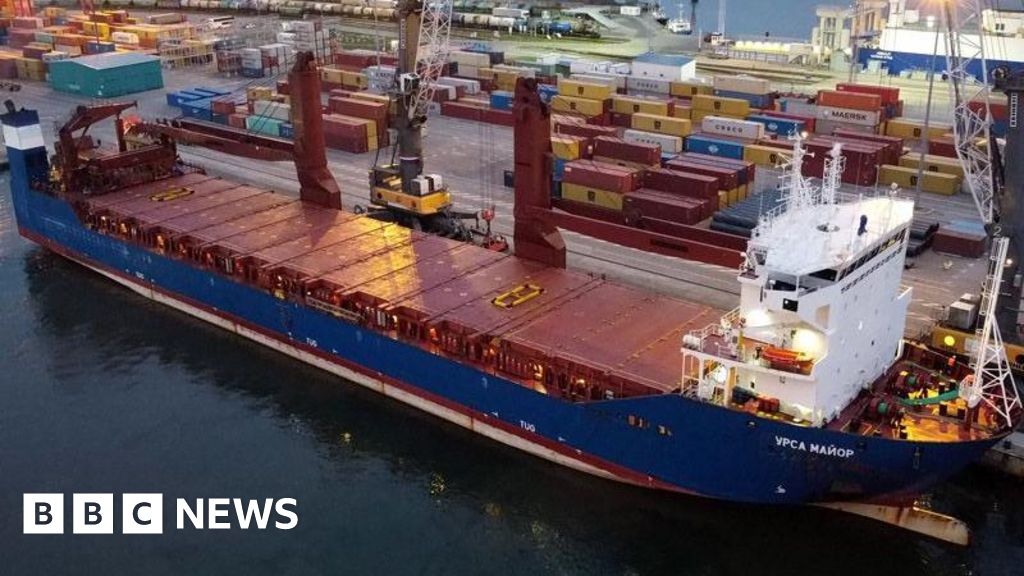
A Russian cargo ship, Ursa Major, has sunk in the Mediterranean between Spain and Algeria after an explosion in the engine room, Russia’s foreign ministry has confirmed.
It said 14 members of the crew were rescued and taken to the Spanish port of Cartagena but two others were missing.
Ursa Major left port in St Petersburg 12 days ago, according to Russian news agency Interfax.
The ship’s owner said it was on its way to Vladivostok in Russia’s Far East carrying two cranes for the port weighing 380 tonnes apiece, although the destination could not be confirmed independently.
Ursa Major was in the same area of the Med as another sanctioned Russian ship, Sparta, when it ran into trouble and the two ships had been spotted heading through the English Channel last week, reportedly under escort.
Earlier this month, Ukrainian military intelligence (HUR) reported that the Sparta was heading to Russia’s naval base on the Syrian coast at Tartous to move military equipment out of Syria after the downfall of Bashar al-Assad.
A Kremlin official said on Monday that Russia was in contact with Syria’s new rulers on the future of its two military facilities. at both diplomatic and military level.
Ursa Major’s owner Oboronlogistika has been heavily involved in transporting cargo to Tartous, although Sparta’s reported destination on Tuesday was Port Said in Egypt.
On Monday, the HUR reported that the Sparta had broken down off Portugal, but the problem had been fixed. Ursa Major was also known as Sparta III, so it was not clear which ship it was referring to.
It is not known what caused the explosion on Ursa Major as it passed between Oran in Algeria and the Spanish town of Aguilas. However, unverified video showed the ship listing badly on Monday.
It was built in 2009 and placed under sanction after Russia’s full-scale invasion in Ukraine in 2022 because of the ship owner’s role in delivering cargo to the Russian military.
Oboronlogistika said the cargo ship, which it described as the flagship of its fleet, was carrying 45-tonne hatch covers for icebreakers, as well as the large cranes for the port in Vladivostok.



